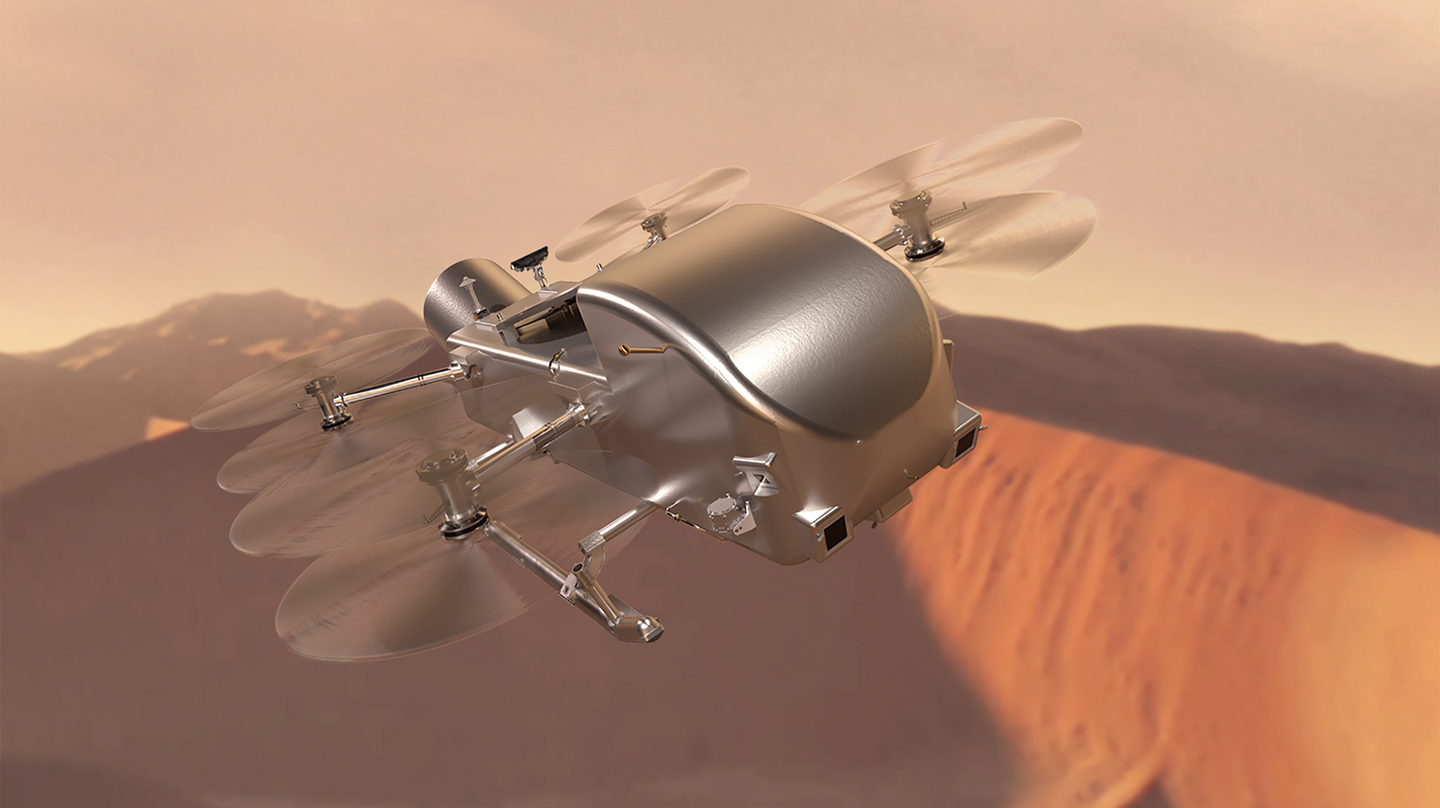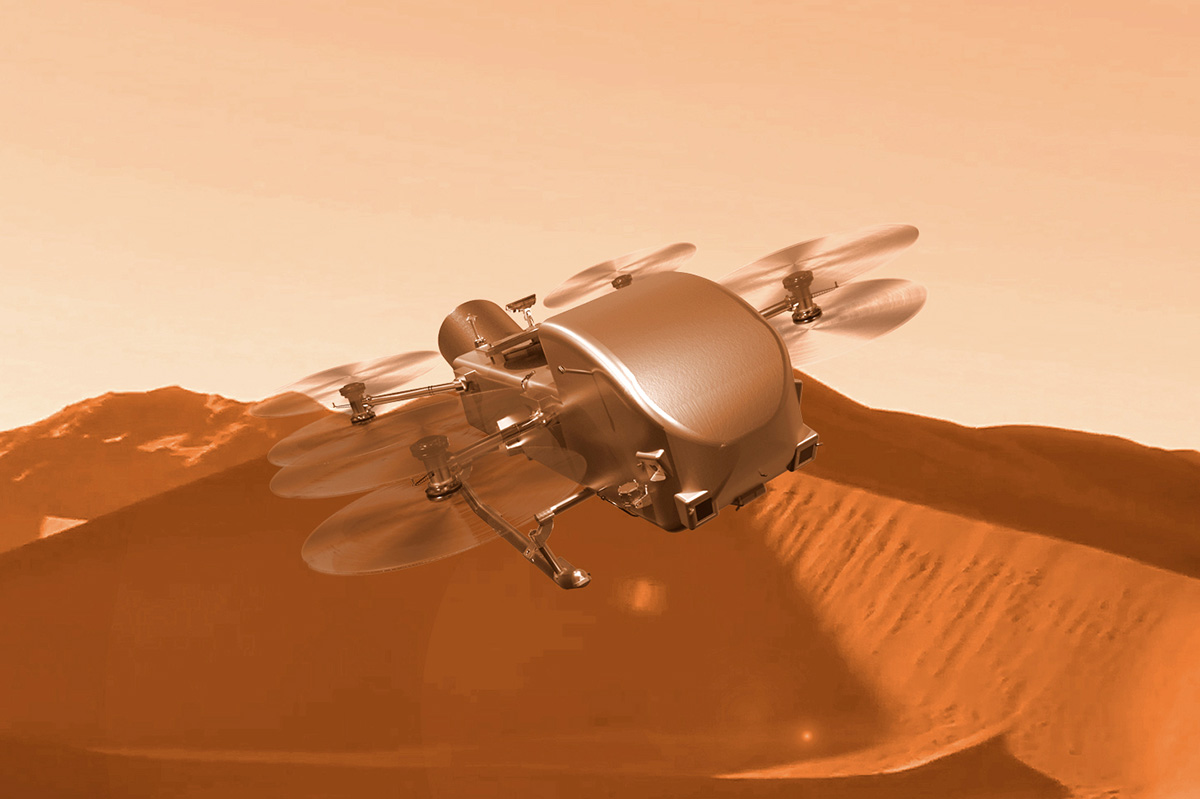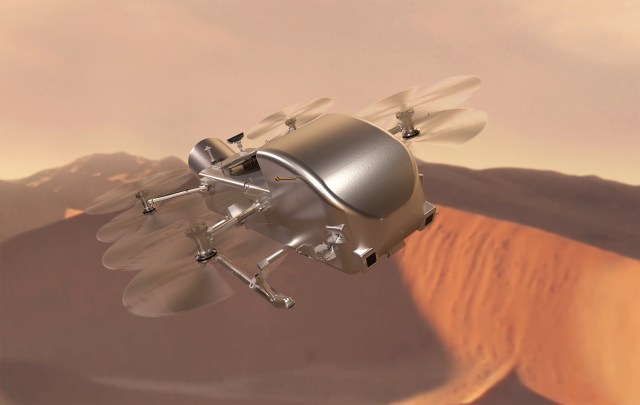
NASA's Dragonfly mission to Saturn's moon Titan, a car-sized rotorcraft loaded with science instrumentation, has been confirmed for a 2028 launch. This marks the first mission to explore an ocean world in this way and investigates the complex carbon chemistry on Titan's surface. The Dragonfly spacecraft will fly between landing sites on Titan's surface, achieving critical planetary science and astrobiology objectives while advancing aeronautics and space technology.
The mission, led by the Johns Hopkins Applied Physics Laboratory (APL) in Laurel, Maryland, is supported by key partners including Goddard Space Flight Center, Lockheed Martin Space, Sikorsky, Ames Research Center, Langley Research Center, Penn State University, Malin Space Science Systems, Honeybee Robotics JPL CNES (Centre National d'Etudes Spatiales), and JAXA (Japan Aerospace Exploration Agency).
Titan is Saturn's largest moon and is known to contain organic materials, resembling the primordial Earth. Rivers of hydrocarbons are present on Titan's surface. The Dragonfly mission aims to explore diverse locations on Titan, characterizing its habitability and contributing to our understanding of prebiotic chemical processes.
NASA's decision to confirm the Dragonfly mission follows a successful Preliminary Design Review in early 2023. The updated budget and schedule were presented in November 2023, with a total lifecycle cost of $3.35 billion and launch date set for July 2028.
The rotorcraft will fly like a large drone, marking the first time NASA flies a vehicle for science on another planetary body. Dragonfly's mission is expected to push the boundaries of what we can do with rotorcraft outside Earth and provide valuable insights into Titan's unique environment.


